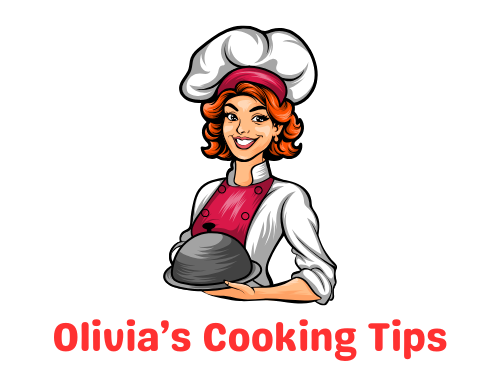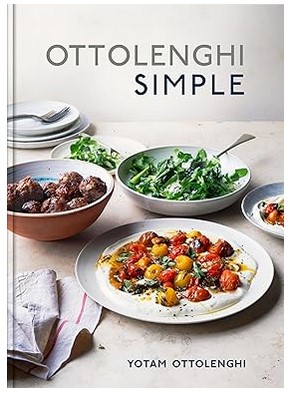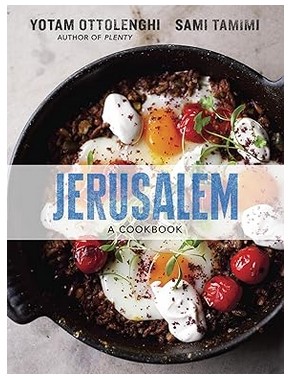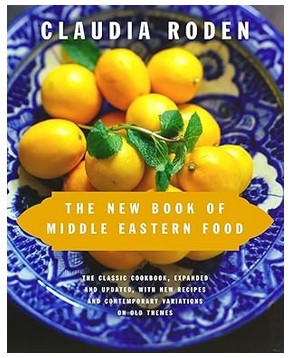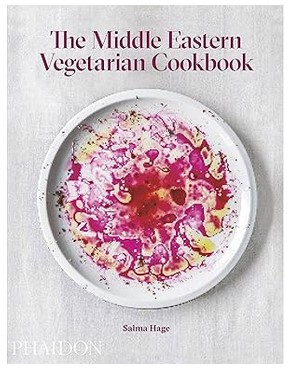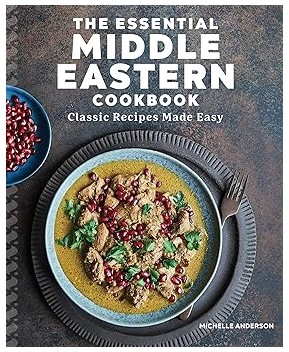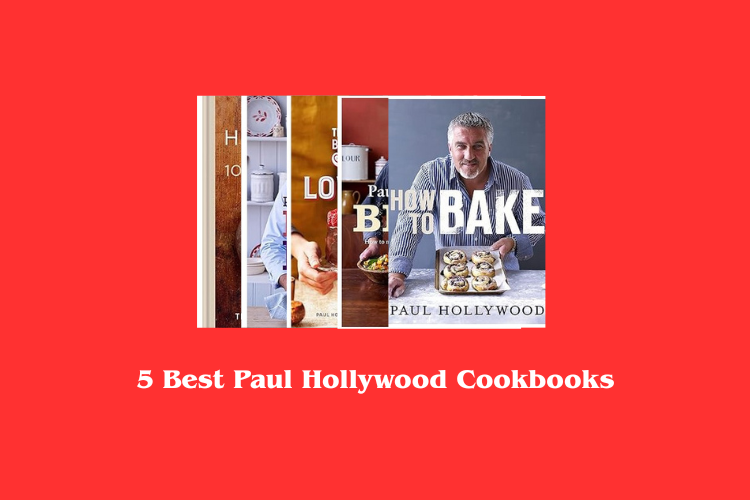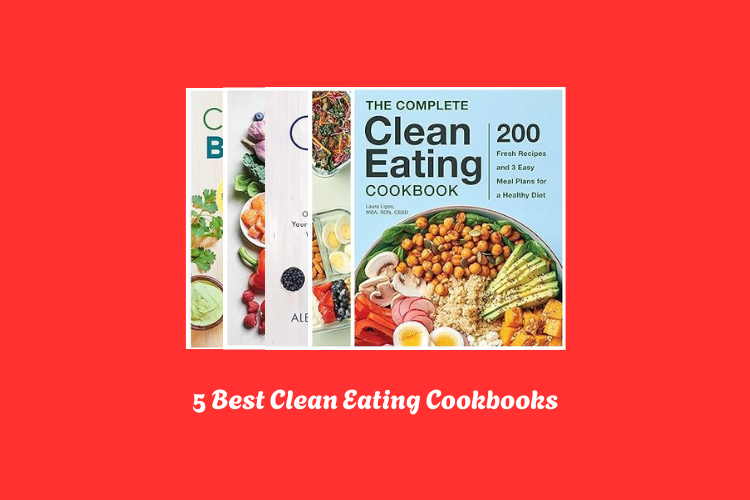5 Best Middle Eastern Cookbooks That Bring Flavor to Your Kitchen
Middle Eastern cuisine offers a rich tapestry of flavors, spices, and traditions that delight food lovers worldwide. These five cookbooks capture the essence of this vibrant culinary culture with authentic recipes and easy-to-follow instructions.
Each book provides a unique journey through dishes like hummus, falafel, shawarma, and baklava. Readers can discover new techniques, ingredients, and stories behind the meals that have shaped the region’s food heritage.
If you want to impress guests or enjoy home-cooked meals with bold flavors, these cookbooks offer inspiration and practical guidance. Experience the warmth and zest of Middle Eastern cooking right in your own kitchen with these carefully selected guides.
5 Best Middle Eastern Cookbooks 2025
1.
Cookbook Overview
Ottolenghi Simple by Yotam Ottolenghi
Yotam Ottolenghi’s book, Ottolenghi Simple, contains 130 recipes. Each recipe uses few ingredients or takes little time to prepare. Many dishes can be made in 30 minutes or less.
The meals show strong Middle Eastern influences but remain easy to cook. The author is a well-known chef and has won the James Beard Award. This cookbook became a bestseller and is loved by many home cooks.
Recipe Variety
The book offers a mix of meals. It includes breakfasts, salads, main courses, and desserts. Recipes use common pantry items and fresh produce. Examples are Braised Eggs with Leeks and Za’atar for brunch, or Lamb and Feta Meatballs for dinner.
The cookbook also offers refreshing salads like Cauliflower, Pomegranate, and Pistachio Salad. Sweet treats like Fig and Thyme Clafoutis satisfy dessert lovers.
Features
Simple and Fast Recipes
Many recipes need only 10 or fewer ingredients. Some cook in one pot or pan. Others can be made ahead of time. This makes cooking less stressful and more enjoyable. Recipes fit busy lifestyles without losing flavor.
Beautiful Food Photography
The book contains more than 130 photos. These pictures help readers see what the final dish should look like. Bright, colorful images make the food inviting and clear.
Focus on Flavor
Each dish highlights bold Middle Eastern spices and fresh ingredients. The author uses za’atar, pomegranate, pistachio, and herbs to create unique tastes. The cookbook shows how simple food can have rich flavor.
Easy to Understand
Recipes use clear instructions. The language is simple for home cooks of all levels. This helps readers follow the steps with confidence. The book suits beginners and experienced cooks alike.
2.
Cookbook Overview
About the Authors
Yotam Ottolenghi and Sami Tamimi share their roots in Jerusalem, a city known for its mix of cultures and flavors. They were born the same year but on different sides of the city Ottolenghi in the Jewish west and Tamimi in the Arab east.
Their cookbook reflects this rich blend. Both authors bring their unique experiences to the kitchen, making the recipes personal and authentic.
What to Expect
Jerusalem includes 120 recipes. These recipes cover a wide range of dishes, from fresh vegetable salads to rich, sweet desserts. The book shows how the city’s Muslim, Jewish, and Christian communities influence each dish.
Recipes come from their own memories and traditional family dishes. This makes the cookbook not only a cooking guide but also a story about a city and its people.
Features
Recipe Variety
The cookbook covers many types of dishes. Readers will find easy vegetable plates, hearty main courses, and beautiful desserts. Each recipe uses simple ingredients found in most stores. The dishes balance flavors like tangy, sweet, spicy, and smoky. This variety allows cooks to explore different tastes and styles.
Clear Instructions
Recipes in Jerusalem come with clear, easy-to-follow steps. The authors write in a simple way that even beginner cooks can understand. The instructions avoid complicated cooking terms. Instead, they focus on guiding readers step by step, making cooking less stressful and more fun.
Cultural Insight
The book shares stories behind the recipes. These stories explain how the dishes connect to the city’s culture and history. Readers learn about the food traditions of different communities living in Jerusalem. This insight adds meaning to each meal and connects cooks to the culture behind the flavors.
Beautiful Presentation
The cookbook features colorful photos that show the final dishes. These photos inspire cooks and help them see what their food should look like. The images also capture the fresh ingredients and vibrant colors of Middle Eastern cuisine. The design makes the book enjoyable to read and use.
3.
Cookbook Overview
The best Middle Eastern cookbooks go beyond just recipes. They share the background and culture of the dishes. One standout is a classic by a well-known author who traveled all over the Middle East. This book collects over 800 recipes from different regions.
It covers cooking styles from Iran, Syria, Lebanon, Turkey, and North Africa. The author highlights key spices and ingredients that define each country’s dishes. For example, Egypt’s dishes often use fried garlic, cumin, and coriander.
Turkey favors cinnamon and allspice. Syria and Lebanon add sumac and tamarind. Iran brings in pomegranate syrup, and North Africa uses preserved lemon and harissa.
This cookbook takes traditional recipes and makes them easier and healthier to cook. It keeps all the original flavors and textures. The recipes range from small appetizers, known as mezze, to meat dishes, vegetable plates, and grain-based meals.
Features
Wide Range of Recipes
More than 800 recipes cover many countries and styles. The book shows recipes for appetizers, main dishes, and desserts. This variety suits anyone wanting to explore Middle Eastern food.
Regional Cooking Styles
The book presents four main cooking styles:
-
Iranian haute cuisine, which features rice dishes with meat, fruits, and nuts.
-
Arab cooking from Syria, Lebanon, and Jordan, focusing on vegetables and grains.
-
Turkish cuisine, famous for kebabs, yogurt salads, and pastries.
-
North African food, especially Moroccan dishes like couscous and tagines with a mix of hot and sweet flavors.
Key Ingredients and Spices
Each region uses special spices and flavors that the book explains well. This helps cooks understand why certain ingredients give a dish its unique taste.
Simpler and Healthier Approaches
Recipes are adapted for modern kitchens. The author uses methods that save time and focus on healthy ingredients. This does not reduce the taste or freshness of the dishes.
Cultural Stories and Travel Insights
The book includes stories and experiences from the author’s travels. These add depth and make cooking more interesting by connecting the food to its roots.
4.
Cookbook Overview
A Trusted Name in Middle Eastern Cooking
Salma Hage, known for her bestselling The Lebanese Kitchen, shares her deep love for Middle Eastern food again. This time, she focuses on vegetable-based dishes. Her new cookbook follows old traditions and matches today’s growing interest in plant-based meals.
Award-Winning and Celebrated
This cookbook won the 2017 James Beard Foundation Award for Vegetable Cooking. That means it’s not only tasty but also well-respected. The book celebrates the rich food culture of the Middle East through fresh, easy-to-cook meals.
Simple, Real Food
The recipes use ingredients like lentils, olive oil, chickpeas, figs, and dates. These have been staples in Middle Eastern kitchens for centuries. Salma brings these classics to life with easy steps and friendly instructions. She also offers vegan and gluten-free options, making the book flexible for different diets.
Features
150 Vegetarian Recipes
The book includes dishes for every meal breakfast, lunch, dinner, and dessert. You’ll find mezze, salads, stews, and sweet treats. Each one focuses on plant-based ingredients, without making the food feel plain or boring.
Inspired by Phoenician Ingredients
Ancient Phoenician flavors bring a special touch. Think grassy olive oil, sweet dates, and fresh herbs. These add depth and soul to each recipe. Salma helps you enjoy both familiar items and a few new ones that are now easy to find in stores.
Mezze and Sharing Style
Middle Eastern food is often shared. This book follows that tradition with recipes perfect for group meals. Whether it’s a spread of dips or a big pot of lentils, the meals invite people to come together.
Easy for Home Cooks
Every recipe comes with clear instructions. No need for expert skills or fancy tools. The focus stays on fresh ingredients and slow, honest cooking. Even new cooks can enjoy success in the kitchen.
Health-Conscious and Nourishing
These recipes use natural, whole foods. They support a healthy diet without losing taste. The dishes feel filling and satisfying, even without meat.
5. The Essential Middle Eastern Cookbook (Classic Recipes)
Cookbook Overview
Easy and Authentic Recipes
The book includes 100 recipes from across the Middle East. It covers popular dishes like Lebanese Chicken Fatteh, Tabbouleh, and Spiced Beef Tagine. It even shows how to make Pita Bread and creamy Hummus from scratch. Every dish feels doable, even for beginners.
Each recipe stays close to the traditional flavors. But the steps are short and simple. You don’t need any fancy tools or rare items. Most ingredients come from regular grocery stores. The goal is to bring authentic taste to your kitchen without confusion.
Covers the Whole Region
The cookbook doesn’t focus on just one country. It gives you a tour across the Middle East. That means you get to try dishes from the Levant, North Africa, the Arabian Peninsula, and more. Each region has its own flavor style.
This book gives you a little of everything. You get to see how food from Morocco feels different from food in Lebanon. But all of it still feels part of the same warm, flavorful tradition.
Great for All Meals
This isn’t just a dinner book. It helps you cook full meals breakfast, lunch, dinner, and even dessert. Try a fresh salad with mint for lunch. Make slow-cooked lamb for dinner. End with sweet, flaky baklava. There’s something tasty for every part of the day.
Features
Pantry Staples Guide
The book starts with a helpful list of pantry items. These are the basic foods and tools to keep ready. Things like lentils, bulgur, ghee, and filo dough. With these on hand, you can make most of the dishes in the book. This section helps you set up your kitchen before you begin. That means fewer surprises while cooking.
Spices and Blends
Middle Eastern food loves spices. This cookbook makes them easy to understand. You’ll learn about key seasonings like sumac, cumin, mint, and allspice. There’s also help with special blends like za’atar and baharat. Each spice comes with a short explanation. No long history lessons. Just what it tastes like and how to use it.
Clear Instructions with Real Ingredients
Recipes in this book don’t need rare items. You’ll use fresh vegetables, simple meats, and everyday seasonings. Each step is clear and short. That helps even new cooks feel confident. You don’t need to measure perfectly or worry about small mistakes. The book is forgiving and friendly.
Colorful and Organized
The layout is clean. Recipes are grouped well. You won’t get lost flipping pages. Many dishes come with photos. That makes it easy to see what your meal should look like. Colors and photos also make the book more fun to read and follow.
Beginner-Friendly
You don’t have to be an expert chef. This book speaks to everyday people. The language is clear. The recipes are short. Even someone cooking Middle Eastern food for the first time will feel ready. Each recipe tells you how many people it serves, how long it takes, and what tools you’ll need. No surprises.
Final Thoughts
Middle Eastern food brings comfort, flavor, and warmth to the table. These cookbooks offer simple steps, clear ingredients, and a strong connection to tradition. Each book gives you a different window into the region’s rich and diverse cooking style.
From street food to slow-cooked family meals, you’ll find recipes that fit every mood and skill level. The Best Middle Eastern Cookbooks help you enjoy this bold cuisine in your own kitchen with ease, joy, and delicious results.
